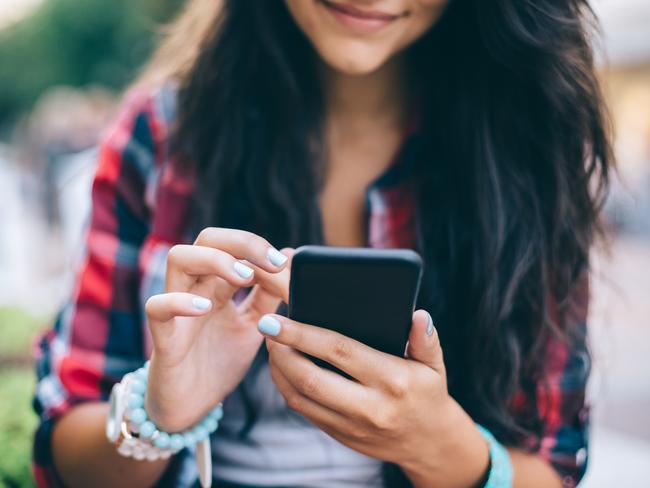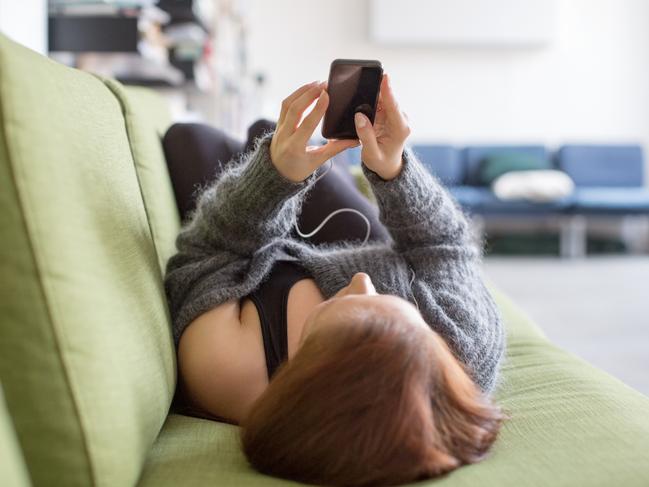Annette Sharp: ‘Why I was right to ban my girls from social media’
Four years ago, Annette Sharp banned her daughters from using social media. And even though they are older and social media has become more popular, the ban is still in place. Annette explains why it has been an “unequivocal” success.
Opinion
Don't miss out on the headlines from Opinion. Followed categories will be added to My News.
I wrote a column about it citing my reasons for the ban, a thing my daughters have only rarely complained about.
Years later I am still asked, on a semi-regular basis, if the ban was a success.
The answer, for me, is an unequivocal yes.
I have peace of mind and three thriving kids who are making great choices regarding friends, who almost never need to be bellowed at concerning their devices and who I never feel the need to spy on.
For my daughters there was a trade-off some might have predicted. The ban has cost them a few friends — “friends”, I tell them, who, incapable of picking up a phone, sending a text or dropping by to make arrangements for social catch-ups, were never genuine friends at all. Some days that’s small consolation to a teenage girl.

When I first implemented the ban, a number of my friends and colleagues, mothers themselves, were incredulous.
A social media ban, to their Facebook-friendly minds, constituted extreme behaviour — something on par with subversive Unabomber activity.
Others smiled while tartly inquiring how I planned to implement the ban — and importantly, how I could feel confident my kids weren’t going behind my back setting up clandestine accounts.
My answer, I’m sure they found completely unsatisfying: I trusted them.
As I explained in my 2014 column, I banned Facebook, Instagram, Twitter, Snapchat and other social media apps from my girls’ lives for a slate of good reasons.
MORE FROM ANNETTE SHARP
NO END IN SIGHT FOR BOYS’ BREAKFAST BURNOUT CLUB
ROXY’S CHANGING FACE SAVED ME FROM BOTOX
Among them, I hoped it would help my daughters avoid cyber bullies, addiction to the self-esteem shredding futility of online approval or “likes”, prevent them from tipping into an eating disorder born of becoming obsessed with being hot enough for Instagram and to keep them safe.
In 2014 my daughters were 13, 11 and 7 and the ban was put in place after my eldest asked repeatedly if she could get a free mobile messaging app kids in Years 5 and 6 had been using at her primary school, Kik.
My youngest daughters were still happily oblivious to its appeal — something I realise now was all about playground cred in much the same way as a set of jacks (knucklebones) or a yoyo was when I was a kid.
Some mothers assured me Kik was harmless but I knew it had the potential to split my shy daughter and I, and draw her into a secret messaging space beyond my reach where I couldn’t protect her from bullying behaviour, which, even in its most harmless form — being excluded from a social chat group — could still heedlessly break her heart.

As it happened, a year later the creators of the app were forced to address police and public backlash after Kik was identified as the app of choice for child predators grooming children.
Happily for me, my ban was already in place and this fear passed me by.
Yes, there have been a handful of complaints from my two eldest daughters about party invitations only distributed via Facebook — something that annoys me enormously as too many smart decent folk assume Facebook to be as trustworthy as the local GP.
Four years on, Miss 11 remains oblivious to social media’s pull (note to parents — catch your children under eight and lead by example if you plan to enforce such a ban), while Miss 15 is working through the reorganisation of high school friendship groups, something that seems customary for girls in Years 8 and 9, a potentially bruising social task that social media compounds negatively.
My eldest daughter, now 17 and newly graduated from high school, has spent the first weeks of her summer independence lounging in pools at friends’ houses and driving around Sydney with her newly licensed-to-drive chums — buddies she happily and expertly communicates with via text.
At one point mid year, following a persuasive appeal, I did break my ban and gave her the green light to venture on to Snapchat to raise a girlfriend who had gone AWOL.
“She only uses Snapchat. She won’t respond any other way,” she appealed.
I softened and she set up a Snapchat account.
I hoped it would help my daughters avoid cyber bullies, addiction to the self-esteem shredding futility of online approval or “likes”, prevent them from tipping into an eating disorder born of becoming obsessed with being hot enough for Instagram and to keep them safe.
Within two weeks she had abandoned it, its appeal — the feverish coolness of it once babbled over and dissected in the playground — by Year 12, passe.
With her high school years now behind her, Miss 17’s social media ban has been lifted and she has recently set up an Instagram account which she plans to use to build a community of similarly minded figure sketchers.
My girl is now old enough and wise enough to understand the dangers of publishing images of herself on social media: She doesn’t want provocative pictures of herself in her swimsuit or skimpy clothing attracting the dubious attention of a legion of secretive soft porn purveyors and haunting her future years.
For now the social media genie remains in its box for my youngest daughter, my middle daughter has accepted my ban while, for my eldest, my fears about social media have been replaced by a new one: P-platers with cars.
On that note I will take my leave for a month to contemplate a strategy for this new terror.
Happy Christmas.


